Employment Options to Explore After Physiotherapy Assistant Training
April 02, 2024Physiotherapy assistants are responsible for facilitating the exercises and techniques prescribed by the physiotherapist for pain management and illness recovery with patients. During physiotherapy assistant training, you will cover fundamental principles that equip you to teach clients essential exercises, assist physiotherapists in providing aid, and write clear and concise client medical reports.
You will be able to efficiently assist clients with neurological conditions, neuromusculoskeletal conditions, cardiovascular problems, and respiratory issues. Due to the extensive training you will receive, you can choose from a variety of work environments during your physiotherapy assistant career.
If you want to learn more about your employment options after physiotherapy assistant training, continue reading!
[Infographic] Employment Options to Explore After Physiotherapy Assistant Training
Work in a Hospital Environment
The duties of Physiotherapist Assistants in a hospital setting include:
- Assisting with equipment, and interacting with patients.
- Assisting during physiotherapy sessions.
- Show patients how to use their mobility aids should they require them.
- You’ll help the physiotherapist rehabilitate a patient after surgery.
- Assisting patients with prescribed exercises.
- Writing reports and documenting vital progress.
- 27.5% of physiotherapists in Canada work in hospitals.
Physiotherapists assistants working in hospitals manage many responsibilities.
Work Directly for a Private Physiotherapist
Private physiotherapists require an assistant for all aspects:
- Private physiotherapists require assistance with the variety of services they offer.
- You will help patients with session setup and wrap-up.
- Advising and instructing patients accurately.
- Record and process patient recovery, documents, and files.
Working for a private physiotherapist will require you to utilize your training in a variety of tasks.
Rehabilitation Centres are a Great Option
Rehabilitation centres will allow you to aid in the patient’s recovery journey:
- Restoring a patient’s physical and sensory capabilities after an injury, illness, or disease.
- Aid in customized rehabilitation programs.
- Assist with prescribed movements and exercises, ensuring accuracy for optimal effect.
- Address other rehabilitation techniques specific to sports injuries, lung damage, loss of mobility, or a hip replacement, amongst others.
- For example, heart patient rehabilitation addresses strengthening the heart, and circulatory system.
Rehabilitation centres require physiotherapist assistants to help patients retain physical and sensory capabilities.
Sports Medicine Clinics Require Physio Assistants
Sports players require comprehensive physio treatments:
- Sports players, particularly high-calibre athletes, require physiotherapy treatment to maintain optimal health.
- As a physiotherapy assistant, you aid athletes in recovery, maintenance, and injury prevention.
- Facilitation of prescribed sports injury rehabilitation techniques.
Sports physiotherapists require assistants to help patients work through sports-related injuries and rehabilitation programs.
Long-term Care Facilities Provide a Different Opportunity
Long-term care presents a different angle of physiotherapy:
- Long-term care addresses patients whose conditions cannot be reversed or rehabilitated.
- Physiotherapists work to promote and maintain the current functionality of a patient, ensuring functional independence.
- Assist residents with prescribed care to prevent further deterioration.
- Assist patients with movement through exercises.
- Introduce and assist patients with required mobility devices.
Long-term care physiotherapist assistants assist physiotherapists in stabilizing a patient’s current condition.
Sources:
https://www.jobbank.gc.ca/outlookreport/occupation/4466
https://www.cihi.ca/en/physiotherapists#
https://work.chron.com/roles-physiotherapy-assistants-17166.html
https://crossroadsrecovery.co.za/what-do-rehabilitation-centres-do/
https://www.collegept.org/patients/what-is-physiotherapy
https://www.parcofontario.com/athletes-need-physiotherapy-sessions/
https://www.intercarealberta.com/wp-content/uploads/2020/10/Physiotherapy-in-LTC-Nov-2018.pdf

Not to put a fine point, but a Food Services Worker career is serious business. The global food service industry, which encompasses a diverse range of establishments – from Michelin-starred restaurants to bustling cafeterias and convenient quick-service chains – caters to the needs of millions of people in various settings daily.
In Canada, the food service market size is worth an estimated 114.29 billion USD in 2024 and is projected to rise at a compound annual growth rate (CAGR) of 17.96% to reach 261.09 billion USD by 2029.
The numbers are undoubtedly instructive, especially if you’ve been considering entering the industry and wondering if you have the chops to have a successful career in the food service industry. If you possess practical multitasking skills, outstanding customer service abilities, and a passion for helping take care of others, an institutional food service career might be perfect for you. Read on to discover all you need about a healthcare Food Services Worker career.
A Food Service Worker Career: What Is the Food Service Worker’s Job About?
Unlike traditional restaurants, institutional food service caters to specific populations within a particular setting. This could be a hospital preparing meals for patients with dietary restrictions, a school ensuring nutritious lunches for students, or a corporate cafeteria offering various options for busy employees.
Again, unlike their restaurant counterparts, institutional Food Services Workers don’t typically prepare meals from scratch. Instead, they focus on prepping, assembling, and serving pre-portioned ingredients following standardized recipes.
Healthcare Food Services Workers take center stage in ensuring patients receive the nourishment they need for recovery. Healthcare Food Services Worker responsibilities vary widely, depending on the setting. On a typical day, they may prepare essential food items, serve patients or customers directly, or ensure that dining areas remain clean and welcoming.
Their duties cover a range of tasks, from preparing and portioning meals according to specific dietary restrictions to carefully assembling patient trays. They may also be responsible for operating specialized equipment to cater to different food consistencies, ensuring all patients have access to suitable sustenance for their unique needs. Additionally, maintaining a clean and sanitary food preparation environment is paramount, and these workers play a vital role in following strict hygiene protocols to prevent the spread of germs within the healthcare facility.
Regardless of the environment, teamwork and effective communication are crucial, as these professionals work closely with kitchen staff and front-of-house teams to deliver a healthy and nutritious dining experience.

What Are the Requirements to Become a Food Service Worker
The beauty of a Food Services Worker career is that it offers a very low entry barrier. A high school diploma or equivalent is sufficient for many positions, with on-the-job training provided to newcomers.
However, specific roles, especially those in more specialized establishments such as health or long-term care facilities, might require formal training and qualifications, such as the one offered at Medix College. Industry certifications relevant to the Ministry of Health dietary guidelines or food handling can enhance your resume and career prospects.
Hospitals, nursing homes, and assisted living facilities often advertise job openings for Food Services Workers. While previous experience in food service is a plus, many facilities offer on-the-job training programs.
Additionally, there are opportunities for professional development. Physical stamina is also necessary, as the job often involves long hours on your feet, and there may be age requirements for roles involving alcohol service in the Food Service Worker job description.

What Skills Are Important for a Food Services Worker?
Healthcare Food Services Workers need diverse skills, including effective communication, teamwork, attention to detail, compassion and empathy, and a positive attitude to excel in their fast-paced and dynamic work environment.
These skills are fundamental for success in this field. Here’s a detailed explanation of these skills:
- Compassion and Empathy: Understanding the needs of patients and residents is crucial for providing exceptional service.
- Attention to Detail: Following doctor’s orders and ensuring proper dietary adherence requires meticulous attention.
- Communication Skills: The ability to communicate clearly with patients, staff, and dietary specialists is essential.
- Teamwork: Working effectively within a team is key to maintaining a smooth operation in a busy healthcare kitchen.
- Positive Attitude: A friendly and helpful demeanor fosters a welcoming environment for patients and residents during their stay.
Are you interested in joining a Food Services Worker online course?
Contact Medix College for more information.
FAQs
Q: What Is the Food Services Worker’s Job About?
A: Unlike traditional restaurants, institutional food service caters to specific populations within a particular setting. This could be a hospital preparing meals for patients with dietary restrictions, a school ensuring nutritious lunches for students, or a corporate cafeteria offering various options for busy employees.
Q: What Are the Requirements to Become a Food Services Worker
A: The beauty of a Food Services Worker career is that it offers a very low entry barrier. A high school diploma or equivalent is sufficient for many positions, with on-the-job training provided to newcomers. However, specific roles, especially those in more specialized establishments such as health or long-term care facilities, might require formal training and qualifications, such as the one offered at Medix College.
Q: What Skills Are Important for a Food Services Worker?
A: Healthcare Food Services Workers’ need diverse skills, including effective communication, teamwork, attention to detail, compassion and empathy, and a positive attitude to excel in their fast-paced and dynamic work environment.

The medical field relies heavily on a network of skilled individuals beyond doctors and nurses. Medical Office Administrators form an integral part of this network. What are the duties of a Medical Office Administrator? They ensure the smooth functioning of daily operations in clinics, hospitals, and other healthcare facilities by providing essential support to medical staff and patients.
The responsibilities of a Medical Office Administrator are varied and include a combination of patient care and administrative work, making them essential to efficiently running healthcare institutions. This blog post examines the primary responsibilities of a Medical Office Administrator, contrasts the role with a receptionist’s job, and assesses if choosing this career path after your training is wise.
What Are the Duties of a Medical Office Administrator?
The duties of a Medical Office Administrator cover a diverse range of tasks, which can be broadly categorized into three main areas: Patient Coordination and Care, Administrative Support, and Financial and Insurance Management:
1. Patient Coordination and Care: The primary duty of a Medical Office Administrator is to ensure exceptional patient care and support. They are often the first point of contact for patients and are responsible for greeting patients and family members, scheduling appointments, and ensuring general patient comfort during their visit.
Medical Office Administrators interact with a broad spectrum of patients, from the mentally ill and elderly to newborns and individuals with chronic conditions, adeptly managing this diversity by tailoring their communication and care approach.
2. Administrative Support: Medical Office Administrators are tasked with various administrative duties that keep the office running smoothly. These include accurate data input of vital information, managing medical records, and handling insurance reimbursements.
Medical Office Administrators are crucial in patient management as they maintain confidential medical records and process insurance payments. They ensure that all patient information is up-to-date and correctly filed, which is essential to effective patient care and the operation of the medical office.

3. Financial and Insurance Management: A significant part of a Medical Office Administrator’s job involves handling financial transactions, including billing patients, processing insurance claims, and determining coverage for each patient. Medical Office Administrators navigate the complex landscape of insurance claims and policies to ensure patients receive the coverage they deserve, often contesting denials and negotiating with insurers on behalf of the patient.
To flawlessly execute this task, they must comprehensively understand the various insurance plans and medical billing procedures covered in medical office admin training, process payments, and accurately assist patients with their insurance queries.
Is a Medical Office Administrator the Same as a Receptionist?
The Medical Office Administrator’s duties extend far beyond those of a standard receptionist. Medical Office Administrators are specialized professionals who require a comprehensive understanding of medical terminology, patient care protocols, and insurance billing procedures.
While there may be similarities between the roles of a Medical Office Administrator and a receptionist, particularly in terms of greeting patients and managing appointments. The Medical Office Administrator’s role is more integrated into the medical team, providing administrative support and direct patient care under the guidance of medical professionals. Their empathetic interaction and provision of emotional support make them a crucial part of the patient care team, enhancing the overall healthcare experience.

Is a Medical Office Administrator a Good Job?
With the healthcare industry continually growing, there’s a steady demand for skilled Medical Office Administrators, leading to job security and opportunities for advancement. Becoming a Medical Office Administrator can be a rewarding career path for those interested in the healthcare sector. It offers the opportunity to impact patient care and experience significantly. The role demands administrative skills and empathy, providing a challenging yet fulfilling work environment.
In addition, working as a Medical Office Administrator allows for a broad understanding of the healthcare system, which could pave the way for further career development in healthcare management, nursing, or other specialized medical fields. The satisfaction of contributing to patient well-being and the dynamic nature of the healthcare environment make it a compelling career choice for many.
Are you interested in our world-class medical office administration course?
Contact Medix College for more information.
Frequently Asked Questions
Question: What are the duties of a Medical Office Administrator?
Answer: The duties of a Medical Office Administrator cover a diverse range of tasks, which can be broadly categorized into three main areas: Patient Coordination and Care, Administrative Support, and Financial and Insurance Management.
Question: Is a Medical Office Administrator the same as a receptionist?
Answer: The Medical Office Administrator’s duties extend far beyond those of a standard receptionist. Medical Office Administrators are specialized professionals who require a comprehensive understanding of medical terminology, patient care protocols, and insurance billing procedures.
Question: Is a Medical Office Administrator a good job?
Answer: With the healthcare industry continually growing, there’s a steady demand for skilled Medical Office Administrators, leading to job security and opportunities for advancement.
Using the Gentle Persuasive Approach as a Personal Support Worker: Key Strategies and Benefits
February 23, 2024
Calling all future personal support workers! Today, we’re exploring a powerful technique for dealing with clients living with dementia. It’s known as the Gentle Persuasive Approach (GPA). This approach is a philosophy that transforms the way we care for others, ensuring compassionate, person-centered care for the individual.
The Gentle, Persuasive Approach effectively diffuses escalated scenarios in a care setting, improving safety, fostering good communication, and focusing on the person rather than the disease. Understanding the GPA technique as a personal support worker will make you a sought-after candidate when entering your first position. Let’s explore this valuable strategy!
Understanding the Gentle, Persuasive Approach
What is the gentle approach to dementia? The term “GPA” in dementia care refers to the Gentle Persuasive Approach. This specialized, evidence-based method is designed for healthcare providers working with older adults with dementia and other cognitive impairments. What is the GPA approach? It’s a thoughtful, person-centered care strategy that emphasizes understanding and empathy. The idea is to see things from the client’s perspective and respond with compassion and respect. It starkly contrasts with more traditional, directive methods and truly puts the person at the center of care. It involves:
- Understanding dementia, including its symptoms, progression, and challenges for individuals with it. This knowledge helps caregivers to be more empathetic and patient in their interactions.
- Person-Centered Care: GPA advocates for person-centered care, recognizing each individual as unique, with specific preferences and needs. This approach respects the person’s dignity and autonomy, even as cognitive abilities decline.
- Non-Violent Crisis Intervention: GPA teaches non-violent de-escalation techniques and how to respond to challenging behaviors often exhibited by individuals with dementia. This includes understanding the triggers for such behaviors and how to prevent or reduce them.
- Communication Strategies: Effective communication strategies are a core component of GPA. This involves learning to use verbal and non-verbal cues to communicate effectively with individuals who may have difficulty understanding or expressing themselves.
- Hands-On Techniques: GPA provides practical, hands-on techniques to guide and assist individuals with dementia in activities of daily living. These techniques are designed to be respectful and gentle and minimize the risk of harm to the caregiver and client.
- Teamwork and Collaboration: GPA encourages teamwork and collaboration among caregivers, recognizing that caring for individuals with dementia is a shared responsibility.
- Continuous Learning and Adaptation: The approach promotes constant learning and adaptation of care strategies as the needs of the individual with dementia change over time.

GPA Best Practices to Remember
Let’s talk about best practices. First and foremost, as part of a gentle, persuasive approach, building trust and rapport is crucial. It’s about creating a bond with clients, showing them they’re in safe, caring hands. Communication is key – and not just the words we use. Our tone, facial expressions, and body language all play a part in conveying respect and understanding.
Managing behaviors is another vital aspect. Sometimes, clients may feel anxious or confused, and it’s our job to recognize these signs and respond in a way that soothes and reassures them. This leads us to de-escalation techniques. It’s all about staying calm and composed, using gentle persuasion rather than force to defuse challenging situations.
Benefits of Using the Gentle Persuasive Approach
The benefits for practitioners and, especially, for clients are immense! With the use of GPA dementia care methods, we see more substantial positive relationships with clients. There’s a noticeable reduction in conflicts and injuries, making the environment safer for everyone.
Plus, mastering the GPA can improve your professional growth and job satisfaction. Of course, it can be challenging sailing. You might encounter resistance or need help to stay patient. The key is persistence and continuous learning. Don’t hesitate to seek support from colleagues or additional training.
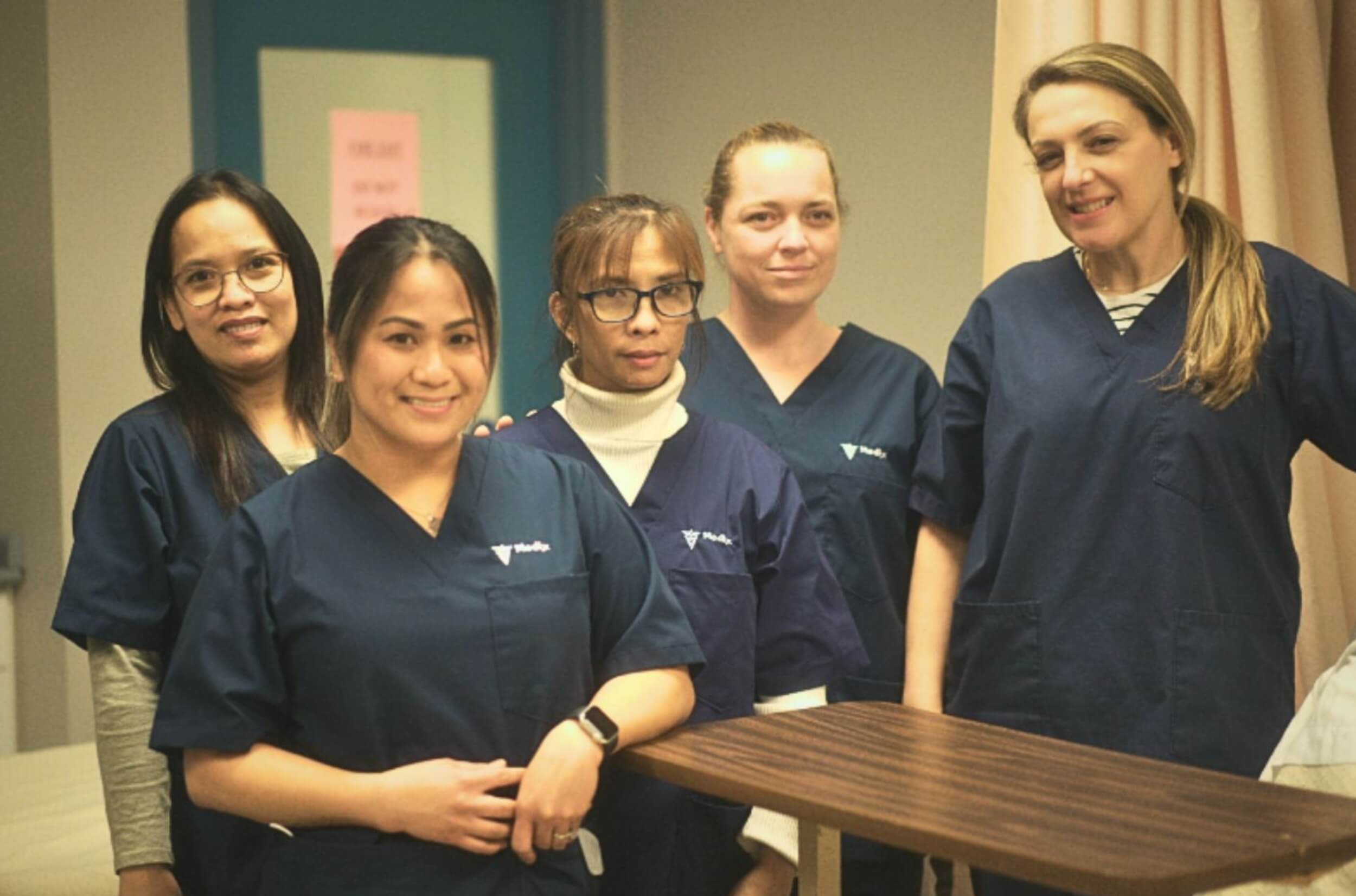
The Gentle Persuasive Approach is a mindset shift that enriches the way we interact with our clients. The personal support worker diploma at Medix College prepares students to tailor support to each individual’s needs they work with, providing outstanding care and accessing opportunities to advance their careers. By embracing GPA, PSWs can foster more meaningful, respectful, and compelling care experiences.
Frequently Asked Questions
Q: What is the gentle approach to dementia?
A: The term “GPA” in dementia care refers to the Gentle Persuasive Approach. This specialized, evidence-based method is designed for healthcare providers working with older adults with dementia and other cognitive impairments.
Q: What is the GPA approach?
A: It’s a thoughtful, person-centered care strategy emphasizing understanding and empathy.
Are you ready to start our personal support worker course?
Contact Medix College for more information!
What’s the Difference Between a Personal Support Worker and a Community Service Worker?
February 16, 2024
The roles of Personal Support Worker (PSW) and Community Service Worker (CSW) are crucial in healthcare, yet they often need clarification. Both positions play essential roles in supporting individuals and communities but cater to different needs and settings. Understanding the difference between PSW and CSW is crucial for aspiring professionals to choose the path that best aligns with their career goals and for the community to recognize and appreciate the distinct contributions of each profession.
What Does CSW Mean?
The acronym CSW, which stands for Community Service Worker, embodies the core of the occupation—service to the community. It symbolizes a dedication to societal reform advocacy, social justice, and helping others overcome obstacles that impede their well-being. What does a CSW do?
Community Service Workers engage in activities that strengthen communities and assist individuals in navigating various social systems. Their work includes developing and implementing community programs, providing crisis intervention, counselling, and directing clients to relevant resources and services. CSWs are often seen as bridges between vulnerable populations and the support systems designed to assist them.

CSW vs PSW: The Core Differences
While the roles of a CSW and PSW might seem similar at first glance, the difference between PSW and CSW is profound, reflecting the diverse needs of individuals and communities they serve. Understanding these distinctions is the first step in recognizing the valuable contributions of each profession and choosing a path that aligns with your passion for making a difference in the lives of others.
At its core, the difference between a PSW and a CSW is in their primary focus areas and the environments in which they operate. What is the difference between CSW and PSW? A Personal Support Worker is primarily involved in individual care, assisting clients with daily living activities. On the other hand, a Community Service Worker focuses more on the social aspects of care.
Personal Support Workers provide physical support, including, but not limited to, helping with personal hygiene and mobility and ensuring clients’ well-being, typically in residential care facilities, hospitals, and homes.
CSWs aim to improve the quality of life for individuals and groups through community development, advocacy, and support programs. They work in a variety of settings, including social service agencies, schools, and non-profit organizations, addressing broader issues such as poverty, addiction, and mental health.
Integrating PSW and CSW Roles in Healthcare and Social Services
While the roles of PSW and CSW are distinct, they are complementary within the healthcare and social service sectors. PSWs provide the necessary personal care that enables individuals to live dignified lives, often working closely with CSWs who facilitate access to broader community resources and support services. Together, they form a holistic approach to care and support, addressing both the immediate physical needs and individuals’ longer-term social and emotional well-being.
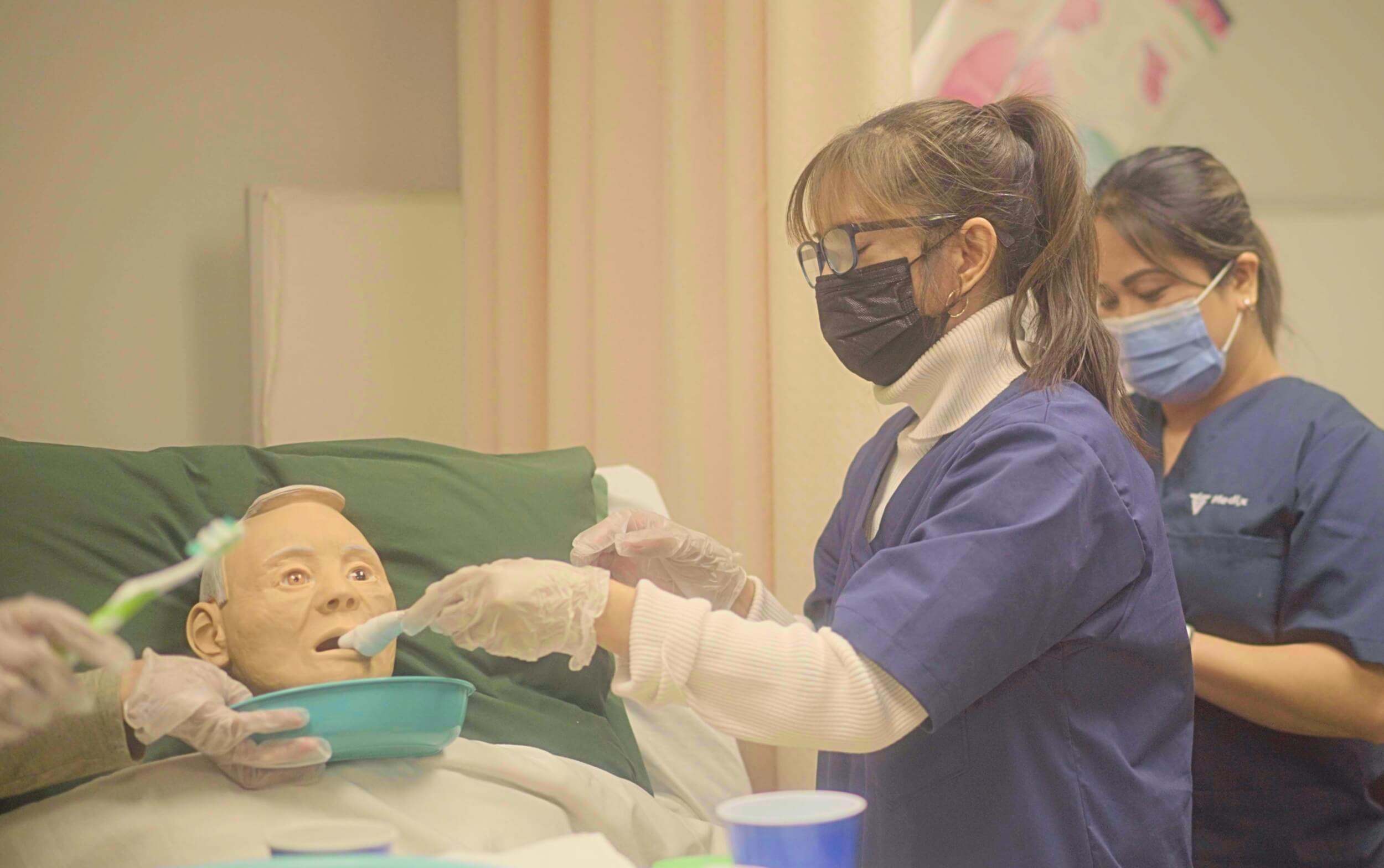
Choosing Between a PSW and CSW Career
For those trying to choose between a CSW vs PSW career, reflecting on your interests and strengths is essential. If you’re drawn to direct patient care and have a compassionate nature, a career as a PSW might be more fulfilling. Alternatively, if you’re passionate about social justice, community development, and advocating for change, pursuing a career as a CSW could be the right path for you.
Medix College offers programs tailored to both professions, providing the knowledge, skills, and practical experience to impact your chosen field significantly. Whether you aim to become a Personal Support Worker or a Community Service Worker, Medix College supports your journey towards a rewarding career.
Frequently Asked Questions
Q: What is the difference between CSW and PSW?
A: A Personal Support Worker is primarily involved in individual care, assisting clients with daily living activities. On the other hand, a Community Service Worker focuses more on the social aspects of care.
Q: What does a CSW do?
A: Community Service Workers engage in activities that strengthen communities and assist individuals in navigating various social systems.
Q: What does CSW mean?
A: The acronym CSW, which stands for Community Service Worker, embodies the core of the occupation—service to the community.
Are you interested in a community service worker course or a personal support worker course?
Contact Medix College for more information.

If you’re considering becoming a community service worker, one of the first things you’ll want to do is explore the role. The role of a community service worker is unlike most other jobs, and understanding the nuances of this role can help you decide if it is something you can see yourself doing in the long term.
Community Service Workers (CSW) are crucial in assisting vulnerable individuals with their daily activities, offering support to enhance their well-being and independence. These professionals dedicate themselves to assisting those in need, from the disabled to the elderly, ensuring their daily lives are comfortable and dignified.
The role of a community service worker can be challenging, but it can also be gratifying. This blog post highlights the key aspects of a Community Service Worker job description.
Exploring the Community Service Worker Job Description
What is the role of community support? Community support is vital in fostering a sense of belonging and well-being within society. It involves individuals coming together to offer one another emotional, practical, and social assistance. Community service workers provide the necessary support to help individuals overcome obstacles and lead fulfilling lives This collective effort contributes to enhancing the overall quality of life for community members. As well as fostering well-being among individuals, community support fosters connections and resilience within a broader societal framework.
Community service workers help the individuals they serve with everyday living tasks like meal preparation, personal care, and transportation, improving their quality of life. Additionally, they advocate for marginalized people or groups, ensuring they have access to essential resources and services needed to take care of their social and health needs.
Community service workers provide administrative, practical, and advice support to the community. In summary, the foundation of a compassionate society is community support, making the community a safer, healthier, and more encouraging place for all its members.

Main Duties of a Community Service Worker
One of the most important questions to ask is what the duties of a community service worker are. Here are some of the key responsibilities you’ll find in any community service worker job description:
- Daily Living Assistance: Community service workers assist individuals with daily living activities, including personal care, meal preparation, and transportation.
- Social, Physical, and Emotional Support: They provide social, physical, and emotional support to clients, such as the disabled or elderly, promoting a holistic approach to well-being.
- Self-Care Tasks: Duties may involve assisting clients with daily self-care tasks such as showering, toileting, dressing, and grooming.

Primary Duties and Responsibilities of a Community Service Worker
Community Service Workers assist vulnerable community members with their daily activities. This includes a variety of tasks aimed at improving the quality of life for their clients. What are the primary duties and responsibilities of a community service worker? They include:
- Personal Care Assistance: They help with personal care needs such as bathing, dressing, and grooming. This aspect is vital in maintaining the personal hygiene and physical health of the client
- Meal Preparation: Ensuring clients receive nutritious meals tailored to their dietary needs and preferences is another key responsibility
- Transportation and Errand Support: Community Service Workers often assist with transportation for appointments, shopping, and other activities, enabling clients to maintain a degree of independence
- Emotional and Social Support: Beyond physical assistance, these workers provide emotional support, often becoming a social lifeline for clients, especially those who may be isolated from family or friends
- Household Management: This includes helping with chores, managing finances, and ensuring the living environment is safe and comfortable
- Healthcare Coordination: They may also be involved in administering medication and coordinating with healthcare professionals to manage the client’s overall health.
Some Common FAQs
Q: What are the duties of a community service worker?
A: Some of the key responsibilities of a community service worker are to provide daily living assistance, assist with self-care tasks, and provide social, physical, and emotional support.
Q: What are the primary duties and responsibilities of a community service worker?
A: They include:
Personal Care Assistance
Meal Preparation
Transportation and Errand Support
Emotional and Social Support
Household Management
Healthcare Coordination
Q: What is the role of community support?
A: Community support is vital in fostering a sense of belonging and well-being within society. It involves individuals coming together to offer one another emotional, practical, and social assistance.
Are you looking for a world-class community service worker program?
Contact Medix College for more information.

Massage therapy is an ancient healing practice that has gained widespread popularity. The benefits of Massage therapy go well beyond stress relief or relaxing spa treatments. On the contrary, it is an evidence-based therapeutic intervention that can be used to treat acute and chronic conditions. Massage Therapists work with various patients to treat illness, injury rehabilitation, and disability.
As a massage therapy student, you are embarking on a journey to master the art and science of therapeutic massage. With the skills you will acquire in our massage therapy diploma program, you will be fully equipped to improve your patient’s quality of life significantly. This guide aims to provide essential insights and tips to help you decode the world of therapeutic massage and excel in your studies.
What Is Therapeutic Massage Therapy?
Massage therapy is the manipulation of soft tissues of the body, including muscles, connective tissue, tendons, ligaments, and joints.
As a massage therapy student, you will be trained to deliver various massage techniques, including how to treat specific signs and symptoms of various conditions. Knowing which technique is the safest and most effective is one of the many things you will learn in school.
What are the main benefits of therapeutic massage? It’s restorative and is designed to alleviate pain and discomfort. Keep reading to discover some of the basics and popular techniques you can use after training.

The Basics of Therapeutic Massage
Now that you know the answer to the outset: what is therapeutic massage therapy, it’s time to unveil some basic principles. First, let’s examine the purpose. Therapeutic massage is about promoting health and well-being. How does therapeutic massage work? It manipulates soft tissues to alleviate pain, reduce muscle tension, improve circulation, and enhance overall physical wellness.
Keep this holistic perspective in mind as you learn the techniques and theories. An understanding of anatomy and physiology is the foundation of effective massage therapy. In our massage therapy diploma program, we study the muscles, bones, joints, and the various systems of the body thoroughly. This knowledge will guide your practice and help you tailor your treatments to patients’ needs.
Explore Therapeutic Massage Techniques
The following are some therapeutic massage techniques that will help you provide a safe and effective massage treatment.
- Swedish Techniques: The fundamental technique taught to massage therapy students. It involves five main strokes: effleurage, petrissage, friction, tapotement, and vibration. Mastering these strokes and their variations is essential for providing a massage treatment.
- Myofascial Release: Focusing on releasing fascial restrictions. Understanding the fascial network and how to apply sustained pressure improves mobility and reduces pain in patients.
- Joint Mobilization: Manual technique involving the gentle movement and stretching of bones and ligaments at the joint to increase mobility.
- Lymphatic Drainage Techniques – Also known as manual lymphatic drainage, relieves swelling when medical treatment or illness blocks your lymphatic system, causing swelling. This technique is delivered by gently manipulating specific body areas to help lymph move out of your body as waste material.

Best Practices to Remember
Today, we’ve explored the definition of therapeutic massage at length. Now, let’s discover some practical tips for success as a Registered Massage Therapist.
- Develop Your Palpation Skills: Palpation, or the ability to feel and assess the body’s tissues, is crucial for massage therapists. Practice regularly to enhance your sensitivity and ability to detect tension and abnormalities.
- Effective Communication: As a healthcare provider, clear and open communication with patients is vital. Before each session, discuss their health history, goals of treatment, and contraindications to massage therapy. During the massage, ask for feedback to ensure comfort and safety.
- Self-Care: Massage therapists should also make time for their health and wellness. You can do this by incorporating stretching, strength training, and proper body mechanics, which will allow longevity in your profession.
- Continuing Education: The field of massage therapy is continually evolving. Stay up-to-date with the latest techniques, research, and trends by pursuing continuing education courses and attending workshops.
As you embark on your journey to career success in massage therapy, remember that it combines science, art, and compassion. In training, embrace the learning process, build a solid foundation in anatomy and technique, and continuously refine your skills. Your dedication to mastering therapeutic massage will benefit your client’s well-being and provide you with a fulfilling and rewarding career!
Are you ready to embark on our massage therapy education?
Contact Medix College for more information!
FAQs
Q: How does therapeutic massage work?
A: It involves manipulating soft tissues to alleviate pain, reduce muscle tension, improve circulation, and enhance overall physical wellness.
Q: What is the main benefit of therapeutic massage?
A: It’s restorative and is designed to alleviate pain and discomfort.

Are you a responsible, detail-oriented worker interested in the pharmaceutical industry? Has the question, how do I become a pharmacy assistant in Canada crossed your mind before? A pharmacy assistant career could be an excellent fit for you. These professionals work under the supervision of a pharmacist or pharmacy technician, performing a wide range of essential tasks to provide patients with the medications they need.
If you’re curious about this career path, keep reading! We’ve created a comprehensive guide to becoming a pharmacy assistant with the tools you need to get started.
What Do Pharmacy Assistants Do?
Pharmacy assistants are essential to the pharmaceutical team, completing various clerical and customer service tasks. Their duties include filling prescriptions, packing and labeling pharmaceutical products, compounding medications, maintaining prescription records, overseeing medication inventory, handling sales transactions, and providing customer service. To thrive in this role, a pharmacy assistant must possess the following soft skills:
- Excellent organizational skills
- Conscientiousness and alertness
- Strong collaborative skills
- A strong desire to help others
- Customer service skills
Does that sound like you? If so, you can enjoy a pharmacy assistant position in a variety of healthcare settings, including:
- Retail pharmacies
- Community pharmacies
- Home healthcare facilities
- Pharmaceutical manufacturers
- Long-term care facilities
- Public health service centers like Methadone clinics
- Hospitals
Discover how to become a pharmacy assistant in Canada to start getting the sought-after industry skills you need to get started.
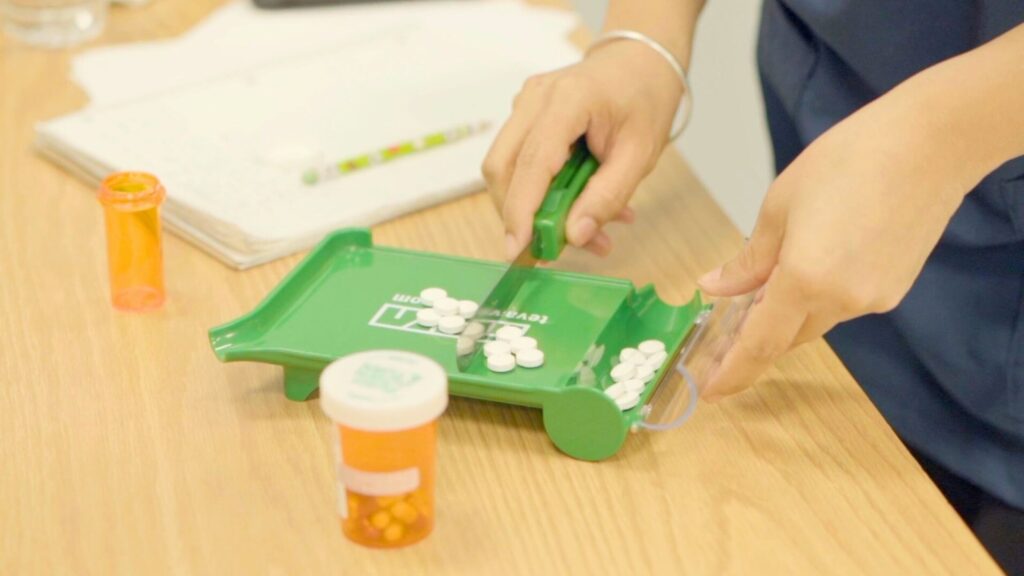
How to Become a Pharmacy Assistant
Now that you have a fundamental understanding of the role, what level of education do you need to be a pharmacy assistant, and how long does it take to become a pharmacy assistant in Ontario? Let’s explore the process of pursuing this career path, discover the answers to these questions, and more.
As with most professional positions, pharmacy assistants should start their careers with a college diploma that equips them with the fundamental knowledge and skills needed to comprehend the pharmaceutical industry.
In addition, employers value relevant experience, so gaining skills for a pharmacy assistant in a program that provides a practical component is an excellent career move. Our pharmacy assistant course prepares graduates to easily enter the working world.

Start With a Reputable Career Training Program
The 44-week pharmacy assistant diploma program at Medix College is designed to endow students with the theoretical and practical skills they need to become significant assets to pharmaceutical teams.
Along with the history and legislation of pharmacy in Canada, you will learn about pharmaceutical and dispensing medical terminology, interpreting prescriptions, abbreviations, various dosage forms, the classifications of drugs, and much more.
A solid understanding of bodily systems through our anatomy and physiology courses will further strengthen your ability to provide a superior service. You will get hands-on training in labs on industry-specific software and practice various everyday pharmacy assistant tasks. Upon completing our program, you will be fully equipped to meet the demands of a pharmacy assistant position.
Are you ready to start our pharmacy assistant course?
Contact Medix College to learn more!
FAQ
Q: How do I become a pharmacy assistant in Canada?
As with most professional positions, pharmacy assistants should start their careers with a college diploma that equips them with the fundamental knowledge and skills needed to comprehend the pharmaceutical industry.
In addition, employers value relevant experience so gaining skills for a pharmacy assistant in a program that provides a practical component is an excellent career move. Our pharmacy assistant course prepares graduates to easily enter the working world.
Q: What level of education do you need to be a pharmacy assistant?
Pharmacy assistants should start their careers with a college diploma that equips them with the fundamental knowledge and skills needed to comprehend the pharmaceutical industry.
Q: How long does it take to become a pharmacy assistant in Ontario?
The 44-week pharmacy assistant diploma program at Medix College is designed to endow students with the theoretical and practical skills they need to become major assets to pharmaceutical teams.
Navigating the Healthcare Landscape: A Comprehensive Guide to the Medical Office Administrator Job Description
January 18, 2024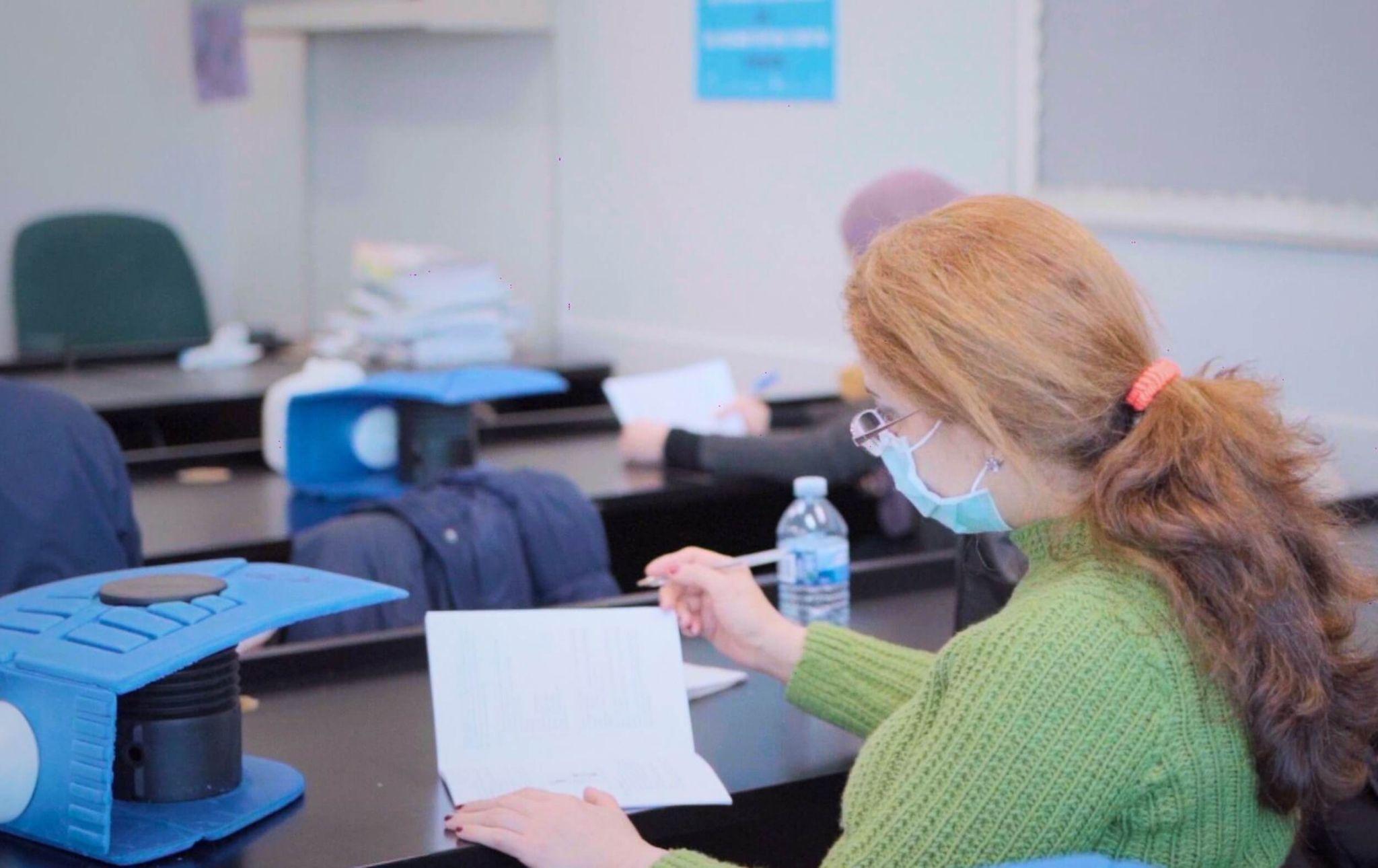
Are you considering a career in healthcare and wondering if a Medical Office Administrator role fits your personality, skills, and training? Exploring the duties and responsibilities of a Medical Office Administrator can help you decide if it’s something you can envision yourself doing in the short to long term.
One of the questions you’re most likely to want answers to is, What are the duties and responsibilities of a Medical Office Administrator? A Medical Office Administrator combines clerical and administrative duties in a hospital. While the role is predominantly customer-facing, Medical Office Administrators also assist physicians and other healthcare team members in ensuring a seamless healthcare experience for patients. This blog post provides a comprehensive guide to the Medical Office Administrator job.
What is a Medical Office Administrator?
If you’ve been to a hospital or clinic, there’s a good chance you’ve interacted with a Medical Office Administrator (MOA). But what does a medical front office administrator do? A Medical Office Administrator is a vital member of the healthcare team, primarily responsible for managing administrative and clerical tasks within a medical clinic or healthcare facility. In addition to general responsibilities, MOAs may be involved in more specialized tasks depending on their workplace. This can include processing insurance forms, handling billing and payments, and coordinating with other healthcare providers for patient care.
Now, what are the roles of a Medical Office Administrator? MOAs handle many responsibilities related to their professions, such as appointment scheduling, data input and billing, word processing, and patient record maintenance. Medical Office Administrators also serve as the first point of contact for patients, providing necessary support services for the day-to-day operation of a doctor’s office. Ensuring high-quality customer service, managing phone calls, and dealing with various supplies are key responsibilities in a Medical Office Administrator job description. This position requires a combination of administrative skills and knowledge of medical terminology and healthcare procedures.
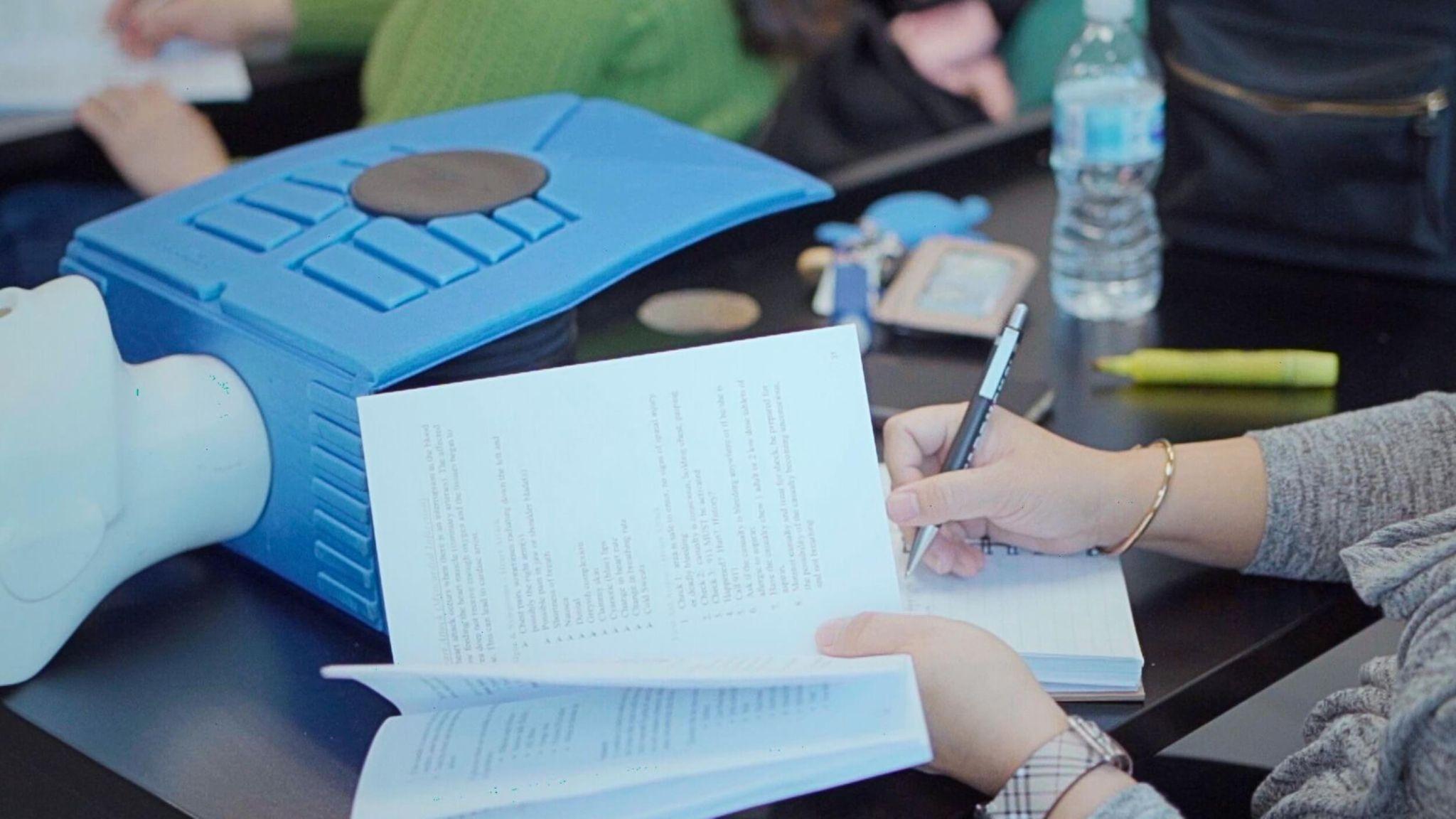
Exploring the Medical Office Administrator Job Description and How to Pursue This Career
Becoming a Medical Office Administrator (MOA) involves a series of steps, from obtaining a high school diploma or a General Educational Development (GED) certification. While specific educational requirements can vary, many employers look for candidates who have completed an approved Medical Office Administrator program, such as the one offered at Medix College.
Our program includes courses in anatomy and terminology, diagnostic testing and patient preparation, and infection control. Gaining experience in administrative roles can also be beneficial. Our program requires students to complete a 240-hour off-site externship placement.
As you may observe from the job description of a Medical Office Administrator, some roles may require additional certification, which involves passing an exam and demonstrating proficiency in the relevant skills and knowledge. Career progress in this sector also depends on lifelong learning and keeping up with the most recent developments in healthcare administration.

Are Medical Office Administrators in Demand in Canada?
The role of a Medical Office Administrator (MOA) is indeed in high demand in Canada. This growing demand is primarily driven by the country’s aging population, which has increased the need for healthcare services. As a result, administrative support in medical settings, such as clinics and hospitals, is a significant requirement.
In Ontario, for example, the employment outlook for Medical Administrative Administrators is positive for the 2023-2025 period. Similarly, in Alberta, there is a strong demand for these professionals. Overall, the healthcare field in Canada is considered stable, with a consistent need for skilled MOAs. The projection of 33,700 new job openings for Medical Office Administrators in Canada between 2019 and 2028 further underscores the bright future and high demand for this profession nationwide.
Are you interested in our medical office administration course?
Contact Medix College for more information.
FAQs
Q: What are the roles of a Medical Office Administrator?
A: MOAs handle many responsibilities related to their professions, such as appointment scheduling, data input and billing, word processing, and patient record maintenance.
Q: What are the duties and responsibilities of a Medical Office Administrator?
A: A Medical Office Administrator combines clerical and administrative duties in a hospital.
Q: What does a medical front office administrator do?
A: A Medical Office Administrator is a vital member of the healthcare team, primarily responsible for managing administrative and clerical tasks within a medical clinic or healthcare facility.

Play is the language of children. It is a dynamic and enriching means through which they explore the world, express themselves, and connect with others. Far from being mere entertainment, play is vital to a child’s holistic development. It fosters cognitive growth, nurtures emotional maturity, enhances social skills, and boosts physical health. In essence, play is the fulcrum of a child’s developmental and educational journey. It shapes their understanding and abilities and prepares them for life’s challenges and opportunities.
Speaking of education, few roles carry as much influence and responsibility as those of an early childhood educator. Beyond simply being a guide during playtime, these educators set the foundation for lifelong learning, facilitating the holistic development of children. In this blog post, we’ll explore how play nurtures the physical, cognitive, emotional, and social development of children, and highlight how early childhood educators facilitate this development.
What is an Early Childhood Educator?
First things first, what is an early childhood educator?
At the foundational level, an early childhood educator is a trained professional specializing in the developmental and educational needs of children from birth to around eight years old. While play is essential, an educator’s scope extends far beyond just facilitating play. The role of an early childhood educator intertwines multiple dimensions of teaching, mentoring, and caregiving.
Early childhood educators design, coordinate, and launch activities to foster children’s intellectual, physical, and emotional growth. They engage with infants, toddlers, preschoolers, and school-aged kids in diverse environments. Additionally, they cultivate relationships with parents and collaborate with other professionals in the field.
Becoming an early childhood educator allows you to shape young minds during their formative years, fostering a love of learning while also making a lasting impact on their lives.

Transforming Play Into Developmental Opportunities
One of the most important duties of a skilled early childhood educator is to harness the power of play, understanding that play is not just recreation; it’s a potent tool for development. In their efforts to facilitate growth through play, educators use various methods.
They use game-based options, such as puzzles, board games, and interactive storytelling sessions, to challenge a child’s thinking, fostering problem-solving skills, critical thinking, and enhancing memory. Beyond this, traditional games like ‘hopscotch’ or ‘duck-duck-goose’ serve a dual purpose: they’re not only fun but also instrumental in improving motor skills, balance, and physical coordination.

On the emotional front, activities like painting, crafting, and music sessions provide platforms for children to express their feelings, introducing them to the nuances of emotions, self-awareness, and the joys of creativity. Group activities also play a key role in imparting vital life skills. A mere game of ‘pass the parcel’, for example, can become a lesson in patience, turn-taking, and collaboration.
Above all, the role of an early childhood educator extends to ensuring a structured environment. Through the use of tools like visual schedules, designated play zones, and gentle reminders, they create spaces where children can understand routines, recognize boundaries, and ultimately thrive in a group setting.
Are you looking for a world-class early childhood assistant course?
Contact Medix College for more information.





